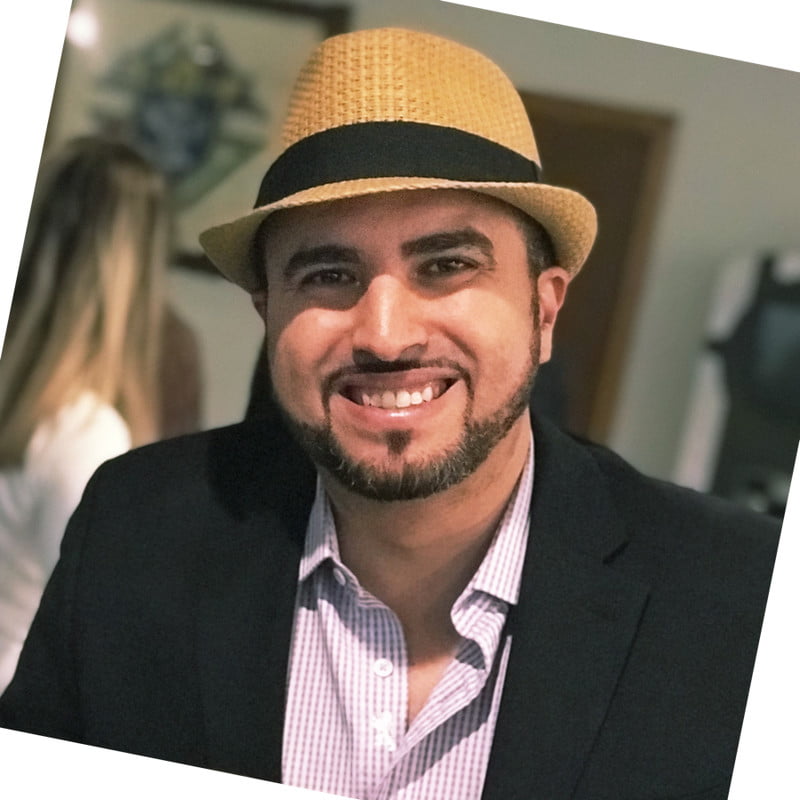Is Your Lean Office at Risk?
Apr 19, 2023
As I engage with both executive teams and board members around the country, I’ve come to gain a depth of understanding of the challenges faced within the machinery of healthcare organizations operating system. Exacerbated by the great resignation and silent quitting of staff, all time high physician suicide, burnout, moral injury to do right with patients, and the financial stresses organizations face today, demand a redesign on how it operates. Yet there is no shortage of stories of many operational excellence departments being cut due to the dire financial situation worsening. This raises the question… why would you cut such a needed resource at a time that you need it most? What is its perceived value? And can you predict its life span?
I have had the opportunity to serve in building, leading, and advancing healthcare organizations as head of their Lean/Operational Excellence departments. The offices ranged from small healthcare systems of a few practitioners to large multi-state 40+ practitioners. Yet with every advancement or collapse of a Lean office, one can learn many lessons! The following are the top 6 lessons:
Lesson 1: Form follows function. Its function should be to solve a problem.
Below is a list of a few gaps I have found from board members of different healthcare system operating model gaps. Regardless of if you’re establishing a new office to support organizational change or reshaping your current one, does your office focus on “Kaizen-ing” for these gaps?
- Breakthrough Thinking: Formulated and well positioned strategies, considering both Internal and External environmental assessments to advance the organization.
- Transparent: Unfiltered, Timely and Useful information enable an advanced and unique partnership.
- Competent: Leadership is developed in Lean Principles and critical thinking and are committed to participate with teams to unleash both individual, team and organization capacity to Run, Improve and Grow.
- Cohesive & Engaged: High level of trust and participation among the executive teams engaged in the realities and challenges of the front-line and engaged in cross-functional frontline problem solving.
- Accountable: All Systems, it being People, Management, Operational or Knowledge; have early detection signals, that enable sound and informed decisions to address root causes of the organizations wellbeing.
- Active in the Community: Streamlined, efficient and supported philanthropic process enables the board members to function at the highest level.
Lesson 2: Architecture should be anchored in values and principles and measured by its behaviors, rituals, and routines.
An organization’s operating model is composed of multiple systems that are driven off principles and beliefs and that produce behaviors, rituals, and routines via helpful tools, methods, and frameworks. Therefore, understanding that you need defined principles is often a missed step. Consider leveraging the Shingo Principles below as a helpful guide as you look inwards into what culture you wish to create. Adherence to Key Behavioral indicators via Leader Standard Work rituals and practices (e.g. Rounding, Waste Walks, standard work observations, Participating in Kaizen and A3 sessions, training staff, # ideas tested, front line recognition given, etc.) coupled with core business metrics (e.g. Profit Margin, Turnover, patient experience, etc.) will create a balanced approach to keeping the organization focused and not making it a flavor of the month.
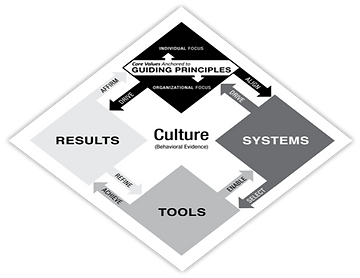
REFERENCE: The Shingo Prize Model
Lesson 3: Governance. Outlining the relationship, expectations and how will the Operational Excellence arm be supported?
Common Lean Office/Operational Excellence Services:
There is No perfect model and office design is always dictated by the gap you wish to close. Below is an example of an Operational Excellence Office service at one point in time. Office was composed of 7 Sensei and 23 Facilitators, 10 project managers and 2 change managers.
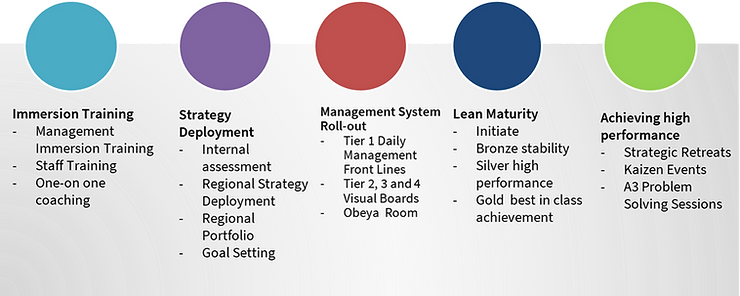
Transformation Steering Committee (Lean Steering Committee):
Core cabinet: Senior Sensei, Chief Executive Officer, Chief Operating Officer, Chief Medical Officer, Chief Financial Officer, and Chief Human Resource Officer.
I have seen others include the Chief Information Officer, Chief Quality Officer, Chief Strategy Officer, and Chief of Marketing Officer as well as Presidents of hospitals but those are often members of the Steering committee, and they often lead a division of that change.

In this there are some critical takeaways to consider. The placement of a Lean Office can single-handedly enable or disable the organization’s progress in its investment. The higher up the placement is, the more the team can influence change and so it’s highly recommended that you leverage its placement to either the CEO or one of they direct reports. That said, there have been situations where two levels down also worked but the Senior Sensei had a seat at the executive table and 1-1 with the CEO.
Lesson 4 Office Structure. How will you organize your Lean/Operational Excellence Office? What factors do you need to consider?
Designing an Office requires many factors to consider and should be re-evaluated each year to fill the gap we wish to close:
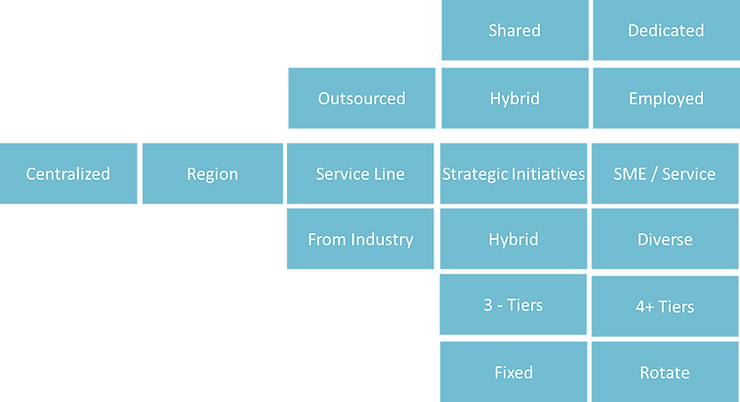
Generally, it is often advantageous to start with a dedicated Full Time support arm and evolve to having additional shared part time practitioners from operations to serve as associates on the team.
Early on, it is common practice to be heavily leaning on outside support as you slowly build an internal team. However, it is also good practice to always have outside objective support even many years into your journey. When embarking on Lean Accounting for example, bringing outside expertise to educate and partner with the internal team will save many pitfalls along the way.
Also, initially, having a centralized team, to inventory all operational excellence talent, standardize the methods, approach, and tools until they are effective and standardize as a team and then decentralize to business unit (Institutes, hospitals, medical group, home care, Skilled Nursing facilities, business office functions, etc.). For Example, 1 Sensei is assigned to a business unit (President of a hospital), an Institute (Cardiology) and a Business function (Revenue Cycle).
I get asked a lot how many facilitators I need. Again, it comes back to the problem you are trying to solve. Generically, if you are establishing a Daily Management System to 100 offices for example then ideally, you would want no more than 15-25 offices per practitioner. However, in a hospital setting, where many departments are in the same building then I have seen it go up to 30 departments per facilitator.
Furthermore, having some dedicated resources quarterbacking functions like business analytics, project management, training also can be advantageous.
When building a team, it has served me well in all situations to create a diverse team. In a 12-year transformation journey, I had selected my Sensei from a diverse mix, from one that worked in a casino, two others from nuclear, hospitality, insurance, manufacturing, restaurant, education, government, and healthcare. This level of diversity allowed us to push the perspectives and challenge assumptions from many different perspectives and allowed us to avoid many blind spots.
Also, a common practice I had on my team is that I rotated facilitators every 18 to 24 months. This allowed for growth of the practitioners and business units having an objective eye. Since this role is heavily built on relationships, it is worth nothing that the first few years as you go from a brown field new building environment to a green field stable maintaining environment, it is recommended to not to rotate.
Ensure an onboarding road map that focuses on the deployment of the new facilitator. It is a common mistake that leaders assume that they will hit the ground running. It is the Sensei job to not let that influence the process of development. Short circuiting the process will set that facilitator up for failure and/or dilute the effectiveness of the teaching.
Lesson 5 Engagement Model. What will the relationship look like between the office and the business?
It is critical that you outline what it will look like to teach the business how to fish and not fish for them. As your engagement model focuses on designing a journey not a destination you will find at different maturity levels the services change. If you mature but still provide every service, then the organization is having you fish and that is not a sustainable or productive model. In, addition, its critical that each year the team reconstructs its structure to support the gap at hand and to match organizational maturity. This can be better understood through Baldridge or Shingo assessment tools or even a Failure Mode and Effect Analysis. This analysis should allow us to understand the functions needed and the structure that will advance it.

Lesson 6 How will you consistently and frequently communicate your story. How are you creating pull and excitement in the organization?
It is paramount that not only do we communicate timely the learnings along the way but also to message through different channels and modes and for different audiences.
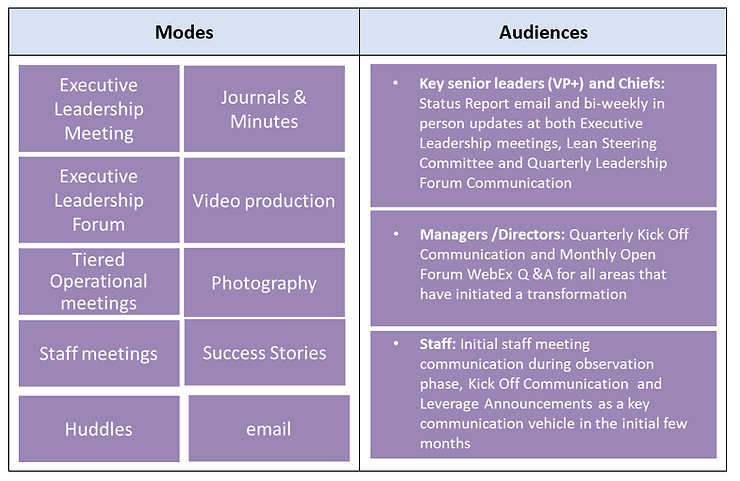
In conclusion
These 6 lessons and considerations will allow you to have a formulated perspective to building, combining, or advancing your operational excellence Lean Office. Last week, February 15th, 2023, Dr. Brock Husby, and Jerry Berlanga presented a workshop at the Healthcare Systems Process Improvement Conference on how to make an office last and here are a few final closing key takeaways:
- View Continuous Improvement Office as a finite and precious commodity to be utilized for critical survival areas.
- Reporting as far up in the organization as possible.
- CI goals are baked into organizational goals – so there is pull rather than push.
- CI work is tied to the core gaps or survival needs of an organization (business problem).
- Going an “inch wide and a mile deep” rather than an “inch deep and a mile wide” to create a model cell/ go and see areas.
- Focus on value rather than training/deployment.
- CI being owned by the org. What is “our way” taking the learnings and items that “fit”?
- Success tied directly to a business problem.
- Weighting “substantive” savings over “fractional” savings in prioritization and resource application.
About the Author
Mohamed Saleh has been a practitioner in Lean & Six Sigma transformations for the past several years, in both manufacturing and service sectors.
Mohamed was directly mentored by one of the country’s foremost experts on enterprise-wide Lean transformation and the Toyota Production System (TPS). He has extensive experience in hands-on healthcare, manufacturing, supply chain, network optimization and enterprise information systems.
Mohamed’s academic credentials include a Certified Six Sigma Black Belt from Kaplan University, a Masters in Technology Management & Bachelors in Mechanical Engineering from Central Connecticut State University and a PhD in Business Administration from Northcentral University.
Original Article: https://opexsociety.org/body-of-knowledge/is-your-lean-office-at-risk/
Stay In Touch.
Subscribe to our newsletter and exclusive Leadership content.

